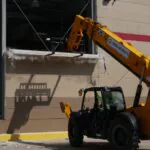Purchasing packaging machinery requires an investment. It’s important to know exactly what your return on investment will look like before you make a final decision.
Adding a Filling and Packaging machine to your production line is an excellent way to increase productivity and lower costs without taking out another mortgage on your house. But how do you choose the right one?
Price
There are several factors that influence the price of packaging machines. Some of these include the machine type, the size and type of container that will be used to pack the product, and the desired speed of production. It is important to take into account all of these variables when determining the ideal pricing structure for a particular project.
A good place to start is with the manufacturer of the packaging machinery. These experts know their equipment inside and out, and will be able to provide accurate advice on the best options for a specific business scenario.
One of the most important considerations when choosing a packaging machine is its performance. Ideally, the device will be easy to operate and maintain. This will save the company money in the long run, as they won’t have to pay for specialized repair technicians. Additionally, the machine should be made of easy-to-clean materials, so that it can be kept hygienic and safe.
Performance
The type of bottle or container used will influence which machine is best for a project. Carbonated liquids may require a level filler to prevent foaming, while bulk containers are better suited for pumps. Filling accuracy is another factor. Overfilling is wasteful, while underfilling can lead to customers complaining or regulators imposing fines. The right machines can guarantee a consistent volume within +/-5%.
Packaging line efficiency formulas should be created to identify areas for improvement. To create this formula, start by verifying and noting each machine’s production operational rate. Then multiply the slowest machine’s speed by its operational time to find out the maximum production rate of the line.
An experienced supplier is the key to maximizing performance and reducing downtime for repairs. Look for a packaging machine company that is located close to your business so technicians can easily travel when you need them. Ask about their spare parts lists and recommended maintenance schedules, as they can significantly impact overall performance.
Appearance
It’s important to look for machines that will complement the design of your bottles or containers. This will help ensure that the finished product has a consistent appearance on shelves or in shops. You can also find machines that will work best with specific bottle sizes or shapes.
Another factor to consider is whether or not the machine is environmentally friendly. Many companies are now trying to reduce their packaging waste, for both financial and environmental reasons. This means that they are looking for machines that can reduce the amount of plastic film used for wrapping.
One type of machine that is ideal for this is the auger filler. This machine uses augers, which look like funnels, to move dry powdered goods into containers. It’s especially useful for talcs, flour, spices, chemicals, and other types of powdered materials. It’s also great for helping prevent clumping or caking, which can make the material difficult to package.
Convenience
Purchasing any machine requires an investment of money, and packagers want to know that the machines they buy are well worth it. One way to assess this is by looking at how upgradeable the equipment is – it should be easy to add more indexing times, pump speeds or fill heads, allowing it to expand its capacity as your production needs grow.
Another consideration is the rate at which the packaging can be produced, with many companies wanting a line to run as fast as possible. A common estimate is fifty bottles per minute for an eight-hour work day, although this varies depending on the type of bottle being used. It is a good idea to consult with the manufacturer about this issue, as they should have experience across a range of industries and can offer realistic projections based on their own expertise. In addition, they will likely have information about the types of products they have packaged using their equipment.






Comments closed.